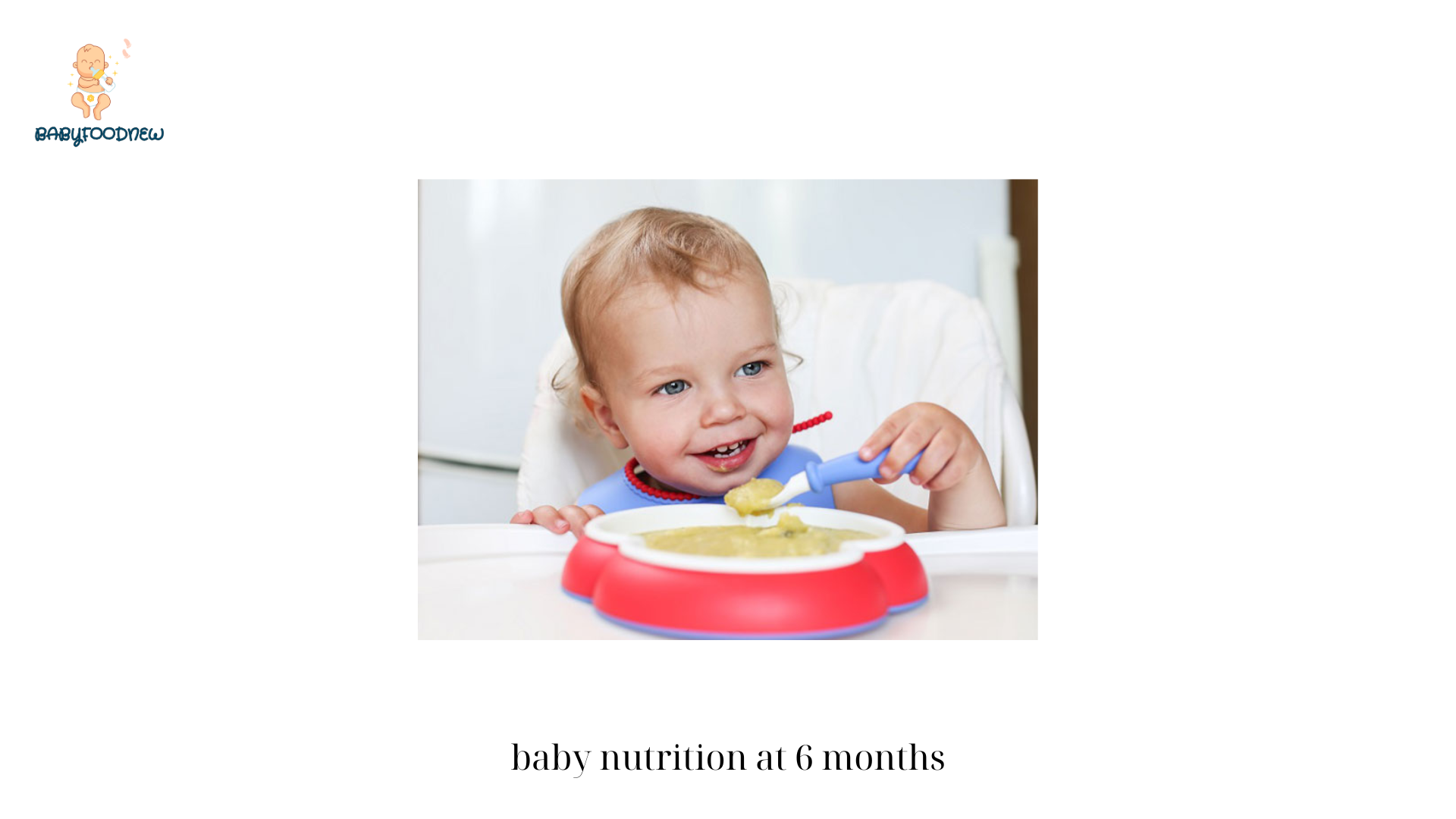The journey of parenting is filled with exciting milestones, and one of the most significant ones is introducing solid foods to your baby. At around 6 months of age, babies start showing signs of readiness for solid foods, signaling a new phase in their nutritional development. This article by Babyfoodnew serves as a comprehensive guide to help you navigate the world of baby nutrition at 6 months and provide your little one with a healthy and balanced diet.
Baby Nutrition at 6 Months: A Guide to Introducing Solid Foods

Understanding the Readiness Signs:
Before diving into the realm of solid foods, it’s important to identify baby nutrition at 6 months the readiness signs in your baby. Look out for signs such as the ability to sit up with minimal support, showing interest in food, and the disappearance of the tongue-thrust reflex. These signs indicate that your baby is ready to explore the world of flavors and textures beyond breast milk or formula.
The Role of Breast Milk or Formula:
Breast milk or formula remains the primary source of baby nutrition at 6 months for your baby even after introducing solid foods. It is recommended to continue breastfeeding or formula feeding alongside the introduction of solids to ensure they receive essential nutrients, antibodies, and hydration.
Choosing the Right Foods:
When it comes to selecting the first foods for baby nutrition at 6 months, opt for single-ingredient purees or soft, mashed foods. Common choices include pureed fruits like apples, pears, or bananas, and vegetables like sweet potatoes, carrots, or peas. Start with small spoonfuls and gradually increase the quantity as your baby becomes comfortable with the new textures.
Introducing Allergenic Foods:
Contrary to popular belief, recent research suggests baby nutrition at 6 months that introducing potentially allergenic foods, such as peanuts, eggs, and fish, early on can actually help reduce the risk of allergies. However, it’s important to introduce these foods one at a time and watch for any signs of allergic reactions. Consult with your pediatrician if you have concerns about specific allergens.
Texture Progression:
As your baby becomes more adept at swallowing and chewing, gradually introduce thicker textures and small soft pieces of food. Baby nutrition at 6 months helps them develop their oral motor skills and encourages self-feeding. Offer well-cooked and finely chopped foods like avocados, soft cooked pasta, or small pieces of soft fruits.

Mealtime Schedule:
At 6 months, baby nutrition at 6 months can start incorporating solid foods into your baby’s daily routine. Begin with one meal a day and gradually increase to two or three meals as they show interest and appetite. Remember to be flexible and responsive to your baby’s hunger cues. Offer solids after a breastfeeding or formula feeding session when your baby is alert and not too tired.
Feeding Techniques:
When feeding your baby nutrition at 6 months, use a small, soft-tipped spoon and allow them to control the pace of eating. This encourages self-regulation and helps them develop their fine motor skills. Offer positive reinforcement and create a relaxed and enjoyable mealtime environment.
Food Allergies and Intolerances:
Babies can be susceptible to food allergies and intolerances, so it’s important to be mindful of potential reactions. Watch for symptoms such as rashes, hives, vomiting, or diarrhea after introducing a new food. If you suspect an allergic reaction, consult with your pediatrician for guidance.
Hydration:
Along with the introduction of baby nutrition at 6 months solid foods, it’s important to offer water in a sippy cup or a small open cup during mealtime. This helps your baby stay hydrated and familiarizes them with drinking from a cup.
Gradual Expansion of Food Variety:
As your baby continues to explore solid foods, gradually expand the variety of foods offered. Introduce different fruits, vegetables, whole grains, and proteins to provide a diverse range of nutrients. Aim for a balanced diet that includes a mix of carbohydrates, proteins, and healthy fats.
Transitioning to Finger Foods:
Around 8-10 months, your baby nutrition at 6 months will start developing a pincer grasp, enabling them to pick up small objects. This is a good time to introduce soft finger foods like small pieces of cooked vegetables, cheese, or soft fruits. Always ensure the foods are cut into appropriate sizes and offer them under supervision.
Potential Challenges:
Introducing solid foods can come with certain challenges. Your baby may initially reject certain foods or textures, which is normal. Be baby nutrition at baby nutrition at 6 months and continue offering a variety of foods. If you encounter persistent feeding difficulties or concerns, consult with a pediatrician or a registered dietitian for guidance.

Conclusion:
Introducing solid foods to your baby at baby nutrition at 6 months is an exciting milestone that paves the way for their nutritional journey. By following the guidelines outlined in this article, you can ensure a smooth transition and provide your little one with a diverse, nutrient-rich diet. Remember to be responsive to your baby’s cues, offer a variety of textures and flavors, and foster a positive mealtime environment. Enjoy this phase of discovery and nourishment as you watch your baby thrive and develop healthy eating habits.


